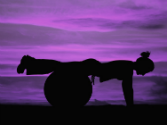 If I was in real estate, my mantra would be “location, location, location”. In the field of fitness, it needs to be “posture, posture, posture”. As someone who does not naturally have good posture, I am amazed, and a little worried in fact, about the implications of bad posture. Not only does posture effect fitness performance, it can also be a precursor to injury if it is not properly aligned.
If I was in real estate, my mantra would be “location, location, location”. In the field of fitness, it needs to be “posture, posture, posture”. As someone who does not naturally have good posture, I am amazed, and a little worried in fact, about the implications of bad posture. Not only does posture effect fitness performance, it can also be a precursor to injury if it is not properly aligned.
Bad posture is really an alignment problem. Dr Rothbart, author of Forever Free from Chronic Pain, uses the analogy of a car to explain the posture issue. He says that when the suspension of a car is unevenly distributed across surfaces of the tires, some parts receive more weight than other parts. This causes the tires to wear unevenly. The thread is worn down until performance is affected. In the same way, when we have bad posture, our body’s weight is unevenly distributed across the joint surfaces of our ankles,knees, hips, back, neck and jaw. Some of these joints receive more weight than others, causing them to wear unevenly. Ultimately this affects efficiency and performance, and can even eventually cause chronic pain.
In terms of fitness, bad posture creates inefficient movement, which causes us to waste energy during exercise and daily activities. This makes us more susceptible to injury. So what do we do? First of all, we should correct our posture if we feel ourselves slouching or rounding our shoulders. It is important to realize what good posture feels like. We can see someone who stands straight and know that they have good alignment, however it is harder to recognize it in ourselves. Proper body alignment maintains and supports the natural curvature of the spine.
To find out what proper alignment feels like, Dr. Rothbart makes the following suggestion: lie flat on your back on the floor with your knees bent. You should feel contact with the floor in the following places: behind your head, at your shoulder blades, at your lower ribs and at your sacrum (the triangular-shaped bone that makes up the base of your spine underneath your gluteal muscles.) There should be a space at your neck and the small of your back. Then, one at a time, straighten your legs until they are shoulder-width apart on the floor. You can also check your alignment while standing with your back against a wall. Your head, shoulders, ribs, sacrum, thighs, calves and heels should touch the wall. This is how it feels to be properly aligned.
Its important to maintain proper alignment when seated, as well. While sitting, try to keep your ears, shoulders and hips in a straight line, just as they were in the exercises above. Place your pelvis against the back of the chair for support. If the back of your chair is flat, use a support (lumbar pillow or rolled up towel) at the small of your back to maintain its natural curve.
Correcting improper posture won’t happen overnight. But if we are diligent about changing the way we stand, sit and walk, we can begin to a dress the problem and set ourselves up for more efficient exercise, better performance, and fewer injuries. As a runner, I realize how crucial this is to my future fitness. Unfortunately I have not really been working on this like I should. I’m going to start by trying to recognize how it feels when I walk or run (or sit) with proper alignment, and try to correct it when I sense that I am not using good posture. I will be writing about posture as I learn more about it, too, because I know how vital it is to my health and future fitness. Unlike the tires on my car, I can’t go get a new body when this one wears down!





Speak Your Mind